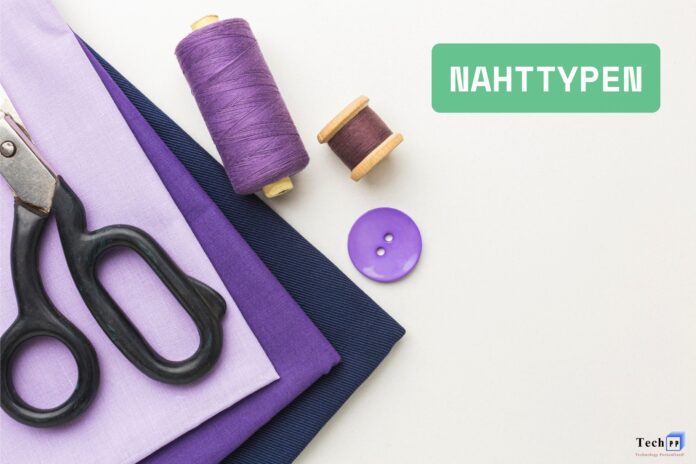In sewing, clothing, and fashion industries, the term Nahttypen denotes various forms of stitches used to join pieces of fabric. The Naht are not random stitches; they possess vital attributes such as strength, efficiency, beauty, and longevity, which all contribute towards the final product. Anyone taken part in fabrication in fashion, textile design or even upholstery requires knowledge on Nahttypen.
This article focuses on the categories of seams, the methods of construction, their intended function, and the effect of seams on the overall product quality as well as the beauty of the final output. If you are someone wanting to hone their sewing skills or someone eager to learn more about the application of seams, you will find this article beneficial because it possesses comprehensive information concerning the types of sod seams.
What are Nahttypen?
The German word Nahttypen literally translates to types of seams where it groups seams with the following significant elements:
- Construction Method: How the material parts are put together and sewn, either by machine or hand stitch, over and under, fold, or others.
- Aim and Objective: To what purpose the seam is meant for, strength and flexibility, aesthetics or even waterproofing.
- Strength: The amount of stress or force the seam is able to hold before failure.
- Finish: The last appearance and action done to the edges of the seam to prevent disintegration and make the piece durable that it attracts.
The manner in which seams are made will have an effect on the garment or item’s durability and design. The right seam choice varies depending on fabric type, purpose, and the form of aesthetics needed.
Common Types of Nahttypen ( Seams)
1. Plain Seam (Einfachnaht)
- Construction: This is the simplest and most common seam. It is constructed by placing two fabrics right sides together and stitching along the edge.
- Purpose: Applicable in majority of day to day clothing and fabrics.
- Strength: Moderate strength. Works well with light and medium weight fabrics.
- Finish: Usually edged with serged or zigzag stitches to minimize fraying.
2. French Seam (Französische Naht)
- Construction: This is a double seam that encloses the raw edges. It is done by first sewing a narrow seam with wrong sides together, and then folding and sewing right sides together.
- Purpose: Used for sheer or very lightweight fabrics as it provides an elegant clean finish.
- Strength: Very strong and neat, ideal for delicate fabrics.
- Finish: Perfect for unlined garments as there are no visible raw edges.
3. Flat Felled Seam (Kappnaht)
- Construction: A very durable seam created by fabric edges being folded under and sewn flat on the inside.
- Purpose: Frequently seen in jeans and other durable or heavy duty clothing like sport wear.
- Strength: Exceptional durability and very resistant to wear and damage.
- Finish: All raw edges sealed and encased, resulting in a flat and neat finish.
4. Overlocked Seam (Overlock-Naht)
- Construction: Achieved with a serger machine that trims and stitches raw edges simultaneously.
- Purpose: Designed for knits and stretch fabrics; is quick and efficient.
- Strength: Flexible, but weaker than other reinforced seam types.
- Finish: Clean, flexible and smooth, efficient in preventing fraying.
5. Flat Seam (Flachnaht)
- Construction: Fabric edges are butted and sewn flat, often stitched with stretch fabrics.
- Purpose: Reduces bulk for streamlined profile, found in activewear and undergarments.
- Strength: Moderate strength, good stretch.
- Finish: Both sides are smooth to reduce risk of irritation.
6. Bound Seam (Eingefaßte Naht)
- Construction: Raw edges are sealed with binding tape or strips of fabric.
- Purpose: Provides decorative detail while also preventing fraying on unlined or exposed seams.
- Strength: Moderately strong depending on the material used for binding.
- Finish: Clean and decorative, functional, and precise.
7. Lapped Seam (Überlappnaht)
- Construction: One edge of a fabric overlaps the other, then they are stitched together.
- Purpose: Common in thicker fabrics, leather goods, or technical textiles.
- Strength: Very strong and often waterproof.
- Finish: Can be left unfinished, or stitched down to top edges for strength.
The Purpose and Importance of Different Seam Types
Selecting the appropriate Nahttypen is much more than a technical choice. It impacts the garment’s:
- Longevity: Workwear and sportswear require high durability abrasions which require heavy armor…uh, I mean apparel with flat felled or lapped seams.
- Aesthetics: Fashion design often utilizes French seams in the stitching to provide a polished refinement to the garment.
- Comfort level: Activewear is best served with flat seams to reduce bulk and irritation.
- Function: Lapped seams provide waterproofing for outdoor garments.
- Servicing: Some seams are better for quick alterations or repairs.
Manufacturers and hobbyists appreciate understanding requirements of a seam. This helps in meeting specific demands thus enhancing the value of the final product and the satisfaction of the customers.
Q&A Section
❓ What determines the choice of seam type?
A: Fabric type, function of the garment, expected appearance, endurance needed all dictate of choice. For stretch fabrics, flat seams are beneficial. Heavier denim requires flat-felled seams.
❓ Can seams affect the comfort of a garment?
A: Yes. Skin flaps are most minimized and skimming sleeves make the arm’s movement freer, especially in activewear and underwear.
❓ What is the strongest type of seam?
A: Flat-felled seam is one of the strongest, and its use in work clothing and denim attests to its strength and the fact that raw edges are hidden
❓ How does seam finish affect the durability of the garment?
A: Using serging, binding, or applying French seams to finish seams will stretch prove the edges of the fabric which lengthens the life of the garment.
❓ Can all seams be seen on the finished garment?
A: Not all seams are visible. For example French seams are intended to be hidden and neat inside the garment. Some others are like flat felled seams which are meant to be seen and are decorative but done purposefully.
Conclusion
The realm of Nahttypen is incredibly important in the context of textile crafts and large in scope. By classifying seams based on their construction method, purpose, strength, and finishing, one can craft garments that serve specific needs, be it fashion, function, or strength.
Each seam type has benefits and challenges. Knowing these makes your sewing projects—be it a delicate blouse or rugged outdoor gear—better. Having the right seam for the application adds durability, beauty, and comfort to the piece, and greatly optimizing its lifespan.
Understanding your Nahttypen is a necessary milestone in achieving success in sewing. It serves as the fundamental step for a beginner hungry to soak in knowledge, as well as for a professional wanting to hone their skills.


